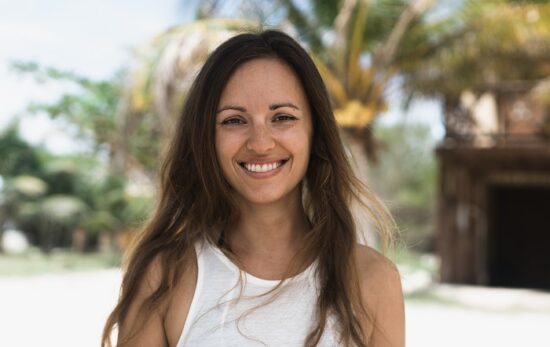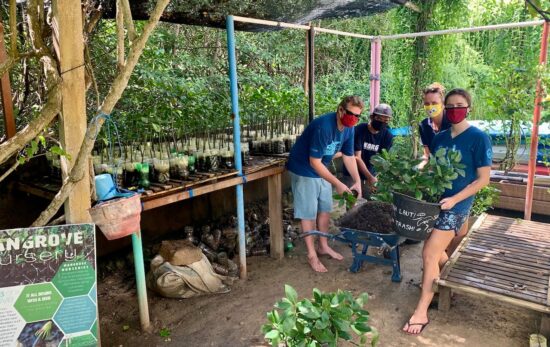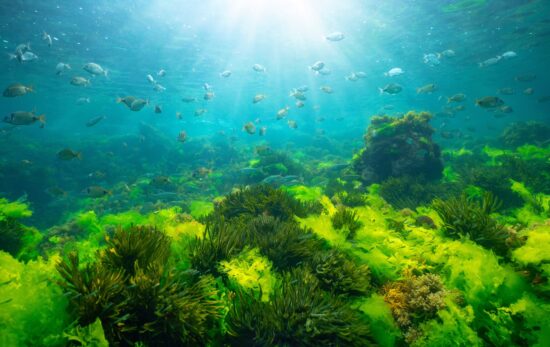PADI Open Water Diver and Torchbearer Viola highlighted the details of an interesting coral restoration project with the Torchbearer Facebook Community. She piqued our collective interest and as a result, we got in touch to learn more about the project and how divers can get involved…
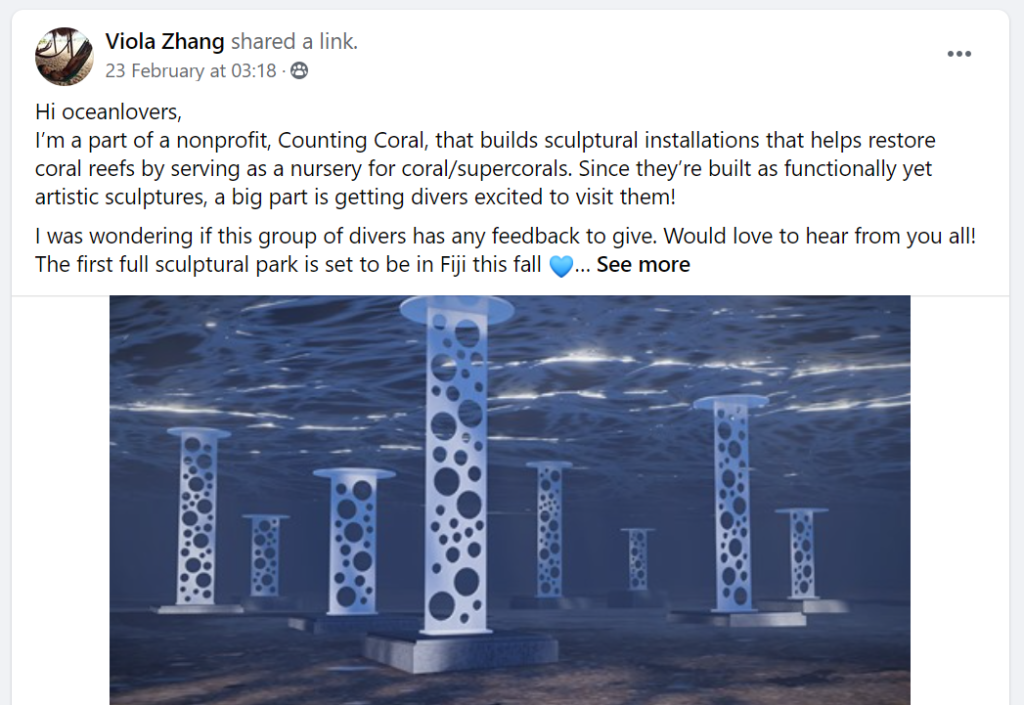
Who are you, where are you based and what is your position?
My name is Viola Zhang, I am based in New York City, and currently have a position as Fundraising Intern with Counting Coral.
Are you a diver? How did you get into diving?
I am! I have been skindiving since I was young and I also have my Open Water. I got into scuba diving about when I was about 16 years old and was in the Bahamas. There, I had my first dive at a shipwreck and was super fortunate to have seen a nurse shark, an octopus, all the fish, and coral reefs! It was amazing.
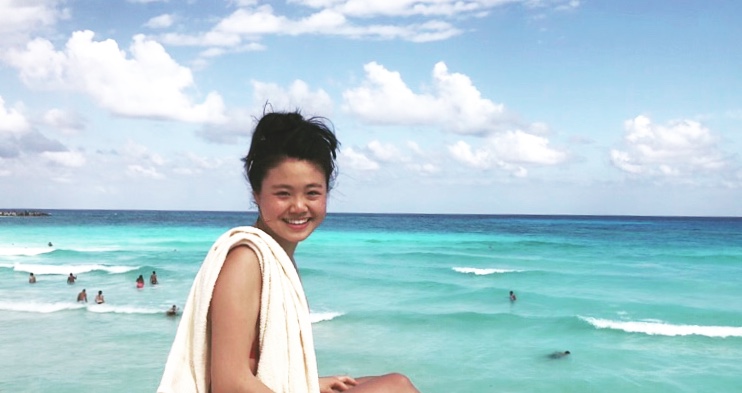
Why is saving the ocean important to you and what are you most passionate about conservation-wise?
Growing up in coastal cities, the ocean has always been a pivotal part of my cultural landscape and livelihood. Food, medicine, materials, the ocean provides invaluable resources. It is similarly a source of immense beauty in itself, but also in the stories and art, philosophies and customs it provokes. It can be tranquil, bringing peace, yet powerful and wild. It is to be respected and holds so many undiscovered secrets—we’ve explored more of outer space than our oceans. It is teeming with Earth’s history and home to unique ecosystems and organisms. The ocean encompasses for me this excitement of exploration and intrigue paired with the beauty and comfort it creates for the human condition.
Conservation-wise, I am most passionate about biodiversity conservation.
What is the origin story of Counting Coral? Who started it and why?
Counting Coral was founded by Jolyon Collier in 2020, with a group of ocean lovers to restore coral reefs and protect them from further damage. Jolyon Collier is an artist, philanthropist and ocean enthusiast; integrating his varied skills into the creation of the world’s first underwater stainless steel sculptural coral nursery.
With this mission in mind, Jolyon created Counting Coral, a nonprofit dedicated to restore Earth’s most vital and biodiverse ecosystem. By aligning arts, engineering, and science disciplines, Jolyon and a team of leading scientists plan to save the small populations of coral reefs that are left. By 2030, over 90% of the world’s coral reefs will have disappeared.
These stainless steel sculptures serve both aesthetic and purpose, acting as a first stage coral nursery and providing both physical support and awareness to the cause. In alignment with other coral conservation groups, Counting Coral aims to plant heat resistant coral, redistribute diver traffic from fragile reef systems, drive awareness through art, create stakeholders, educate and create community projects with funding from the sculptural park.
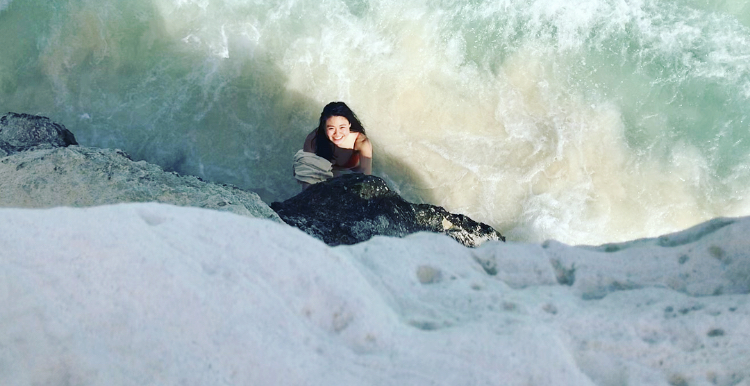
How did you get involved?
I got involved earlier this year after graduating from university because I wanted to use my interdisciplinary background for ecological and societal sustainability. The clock is ticking with climate change and we need people from all walks of life, with all kinds of expertise to be putting our planet first. Protection of our coastal ecosystems is so integrated into the well-being of our oceans, the wider ecological balance, and the millions of people who depend on it for food, resources, culture, and inspiration.
I found Counting Coral’s approach multifaceted and particularly impactful as it brings art and science together to restore reefs with the local community, and generates awareness through an emotional connection. While the impact of the sea is far reaching, and we’ve seen the severity in the occurrences of natural disasters, it is not always visible everyday especially when lives are being turned upside down everyday by different climates—political, economic. I think the more we make the beauty and power of the ocean accessible to people, they will be touched and that emotional connection will impel people, like it has me.
What does success look like to the Counting Coral team?
Overall, success for Counting Coral is being able to mobilize and inspire a community, a volunteer, a donor, or anyone from any walk of life. Being effective in an approach to create meaningful ways to engage individuals and connect them to the nonprofit’s mission. Big or small, direct or indirect; Counting Coral strives to positively influence and educate individuals on how to better care for the planet. With this in motion, Counting Coral will be able to progressively work on alleviating the coral devastation.
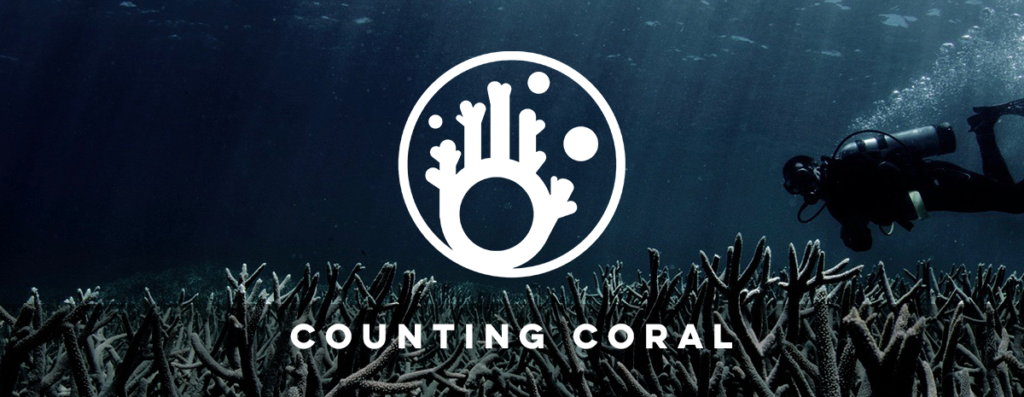
Counting Coral’s short term goal is to successfully install the first underwater sculptures in Fiji. This is underway as Counting Coral has raised the funds for the first installation, completed the full design, and are working with lead marine scientists focused on reef conservation. Counting Coral’s larger plan for success is to collaborate internationally with governments to create marine protected areas, manage sites, and develop large super coral farms which will in turn support local restoration projects.
The future of Counting Coral’s long term success involves a marine protected area/national park, that would be managed and organized by the organization. This area would be restricted and managed similarly to a national park on land, including fees, and the utilization of the ecosystem resources. Here we would install the world’s largest marine park with an independent dive operation where all revenues would go back into reef restoration.
Within the national park boundaries will be one of the largest sculptural coral nurseries in the world planted with heat resistant coral. The space will be used as a spawning ground for super coral, and a harvesting area for fragmentation coral planting. The coral can be harvested using methods of sexual, or asexual reproduction. We hope to build out 5 acres of interactive and elaborate sculpture mazes for all divers to enjoy. Our specific intentions are to emphasize night diving by lighting up our sculptures at night, highlighting specific coral growth, and creating the most memorable and breathtaking night time diving experience.
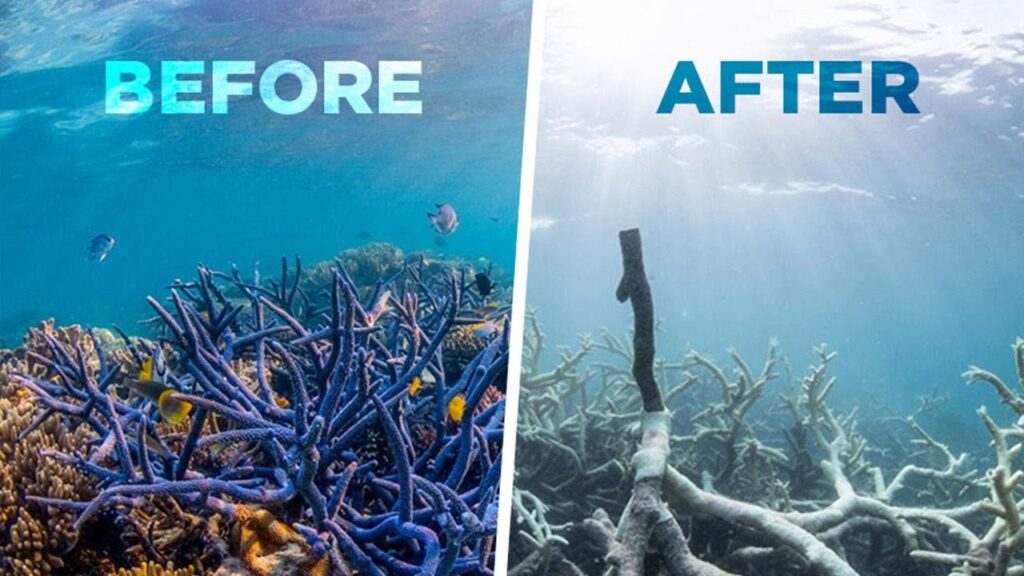
Can you explain a bit more about the sculptures and the materials used? How do they differ from other artificial reef structures?
Counting Coral’s sculptures are made from marine-grade stainless steel, which is a durable and non-corrosive material. Differing from most coral gardening practices, Counting Coral’s structures are not only practical, but are beautifully designed, and add a visually appealing aesthetic to the underwater world. With a primary focus on being a coral nursery, there is immense importance to be visually appealing, as this will help attract divers to these reefs for awareness as well as to divert traffic away from fragile natural reefs. Members of the local community in which these restoration sites reside are key stakeholders and receive the economic benefit of the installations.
The benefits of Counting Coral’s sculptural nurseries include their ability to decrease diver traffic from the fragile reef systems, while driving awareness through divers and the artistic aesthetic of the sculptures. When installed they are planted out as a first stage coral nursery, planted with heat resistant coral, and later being harvested and planted onto a secondary nursery or back onto the reef for restoration. Dive operators, hoteliers, restaurants and the local communities have an added revenue stream and become stakeholders through these sculptures. In some cases, they can also be used as a study site for scientists to have a controlled environment to study coral.

So the plan is to install the first sculpture park in Fiji, right?
Fiji’s borders have been closed since March 2020 due to the COVID pandemic. Once Fiji opens their country, Counting Coral plans to install immediately. In Fiji, Counting Coral is partnered with Coral 4 Conservation, and Plantation Island Resort, who is hosting us for the duration of the installation. The sculptures will be partially assembled when shipped, but upon arrival, all 496 parts of the sculpture will need to be welded to create the finished art. Once assembled, rope and stakes will be used to prepare the sea floor for the intricate design layout. There are 109 sculptures to install, starting with 100 of the flower design, and then working on the larger pieces which can weigh up to 300 pounds. Float bags will be used for this. The whole ocean install will be about 14 days.
Do you need any help from PADI Divers? What sort of help might be needed? How can we stay up to date on possible opportunities?
Counting Coral does have key diving instructors to help with the Malolo Reef Project, however extra hands are needed. Counting Coral would be thrilled to have PADI divers a part of this project and experience. As Fiji gets built and more restoration projects are initiated, we would need divers to help with installation. Sites will vary in location globally so we hope the diving community can help restore reefs with us wherever they call home. Our newsletter will be informative on the latest possible opportunities as well as our website: countingcoral.com and we are on social media everywhere @countingcoral.
What will the sculpture park look like once it’s in the water and will divers be able to visit? What sort of marine life do you hope it will attract and support?
The sculptural marine parks will vary from site to site. The initial park in Fiji is a park of 109 sculptures surrounding the centerpiece featuring an unrevealed design around the theme of “hope”. Divers will absolutely be able to, and are very welcomed to visit! Our sculpture will be planted out with heat resistant coral such as thick-branching Staghorn Coral of blue Acropora Nobilis and multi-colored tightly branched Digitate coral, that comes in bright colors of purple, blue, yellow and green. This will bring in a plethora of reef fish, some for food in the form of alea and sponges that will grow on our work and some for shelter from predators.
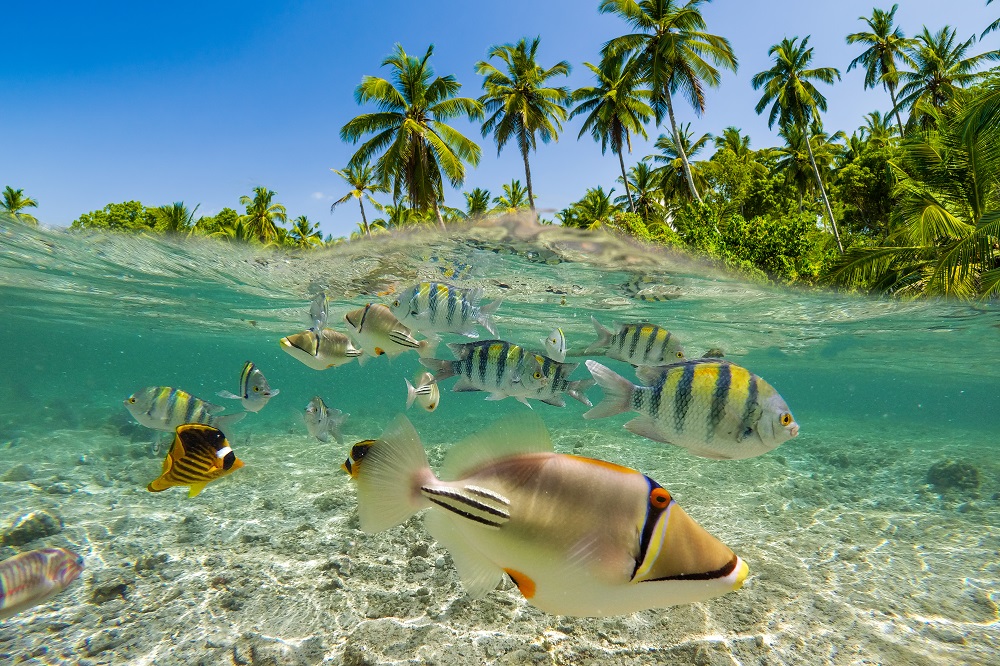
How is the project financed? Can divers donate to the initiative? How?
Counting Coral’s projects are financed by the general public, philanthropic donors, sponsors, supportive businesses, and all of you! Our nonprofit model is that all donations go directly into the projects, every penny makes the world of difference. We have also included a full breakdown of the project’s more specific costs, so we can be fully transparent with all donors. In addition to this, we are working towards securing foundation grants, both public and private. Divers can donate on our site (https://www.countingcoral.com/contribute-1) as well as my personal page (https://secure.givelively.org//donate/counting-coral-corp/the-world-s-first-stainless-steel-sculptural-coral-nursery/viola-zhang). Please check out the “Donate” page on our website for the breakdown on project costs.
If divers want you to consider their local reef for the next sculpture park, what advice would you give them?
For this request and any question or comment, please feel free to reach out! Email Counting Coral at [email protected]. Introduce us to your local reef and your community. Counting Coral would be thrilled to be in contact with anyone looking to make any sort of change for their local reef.
Anything else to add?
Counting Coral is so grateful to have the opportunity to communicate, collaborate, and learn from wonderful organizations such as PADI. We’d like to take a moment to celebrate the Nonprofit sector and the selfless work that so many individuals do for our planet and our people. Nonprofit organizations play a vital role in providing critical services that strengthen communities and become a voice of the people or issue they serve. In a world that’s constantly burdened with natural disasters, social injustices and countless other problems, nonprofits serve as a glimpse of hope.
In contrast to the wonderful work they do, nonprofits receive the least amount of funding, making it harder for them to scale and grow. Nonprofits, donors, philanthropists, eco-friendly businesses, anyone that’s out there trying to make a difference – you are a force for good and we thank you for your direct actions and your kind heart. Your engagement and support is sincerely appreciated. Please feel free to reach out at any time for any reason – [email protected]
[Answers written by Viola Zhang, Brooke Hodgson, Jolyon Collier of Counting Coral]
